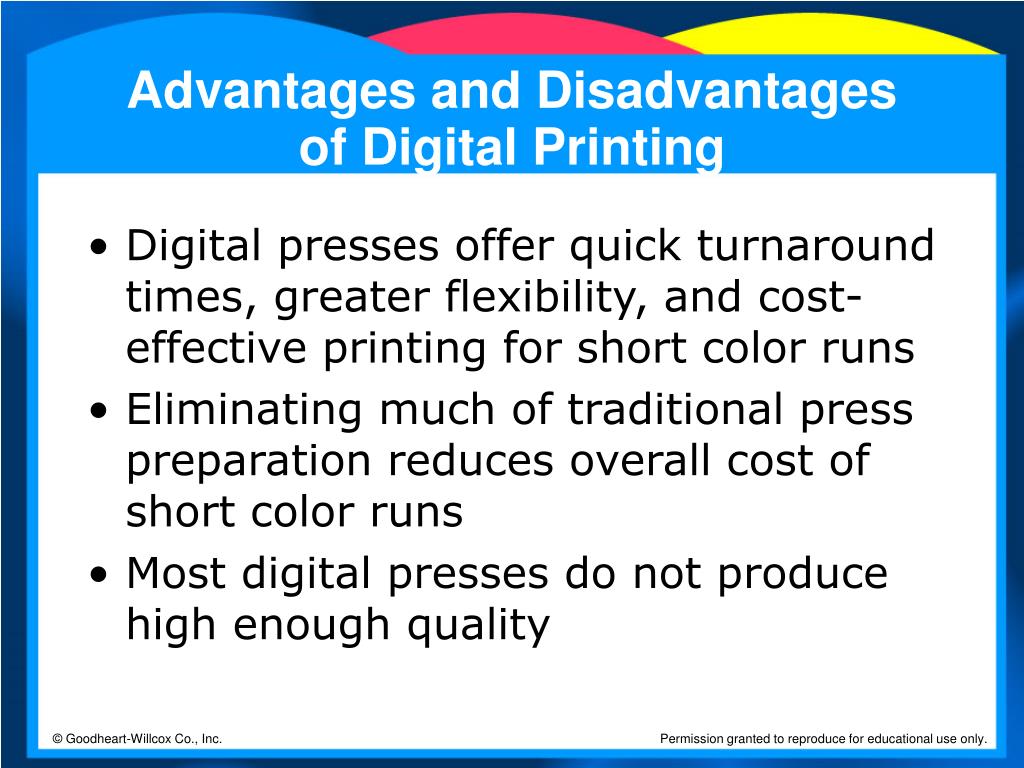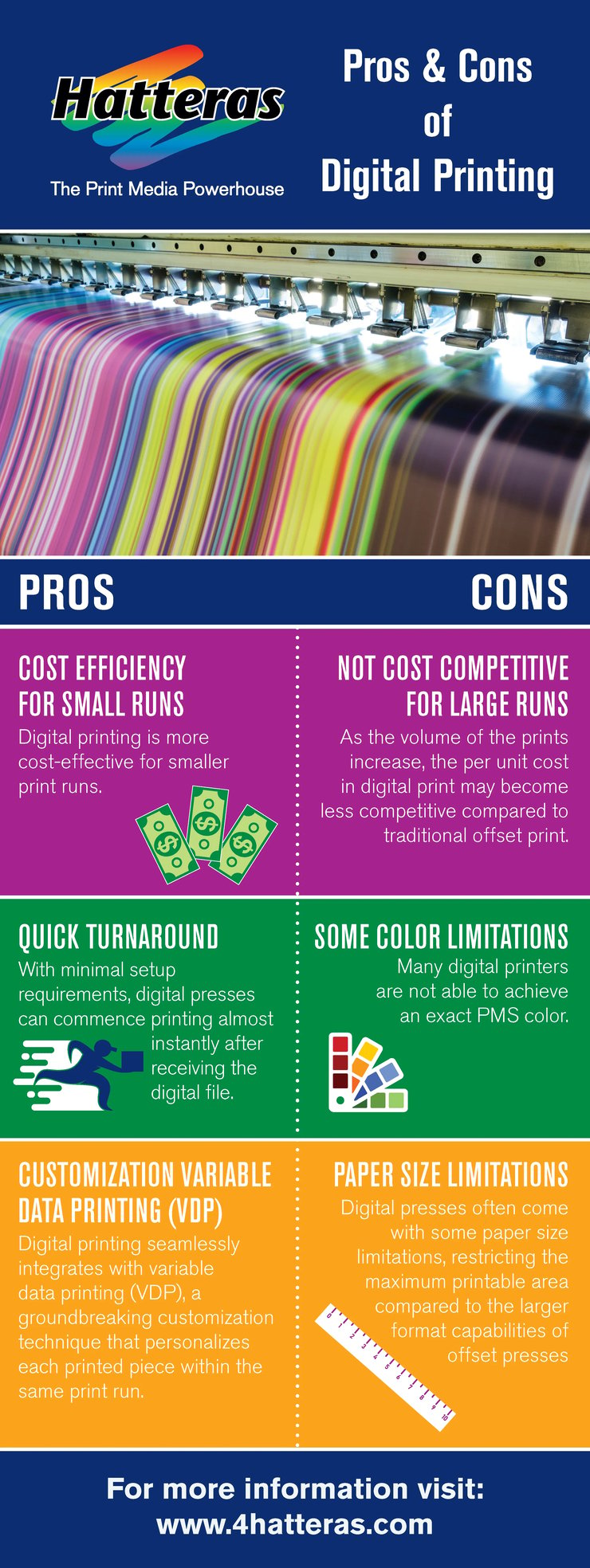The Buzz on Digital Printing
The Buzz on Digital Printing
Blog Article
Get This Report on Digital Printing
Table of ContentsIndicators on Digital Printing You Need To KnowThe Definitive Guide for Digital PrintingThe Only Guide to Digital PrintingSome Known Details About Digital Printing Digital Printing Things To Know Before You Get ThisSome Known Incorrect Statements About Digital Printing
Variable information printing, such as direct mail with individualized codes and addresses, is preferably suited for digital printing. Digital fast printing only requires 4 steps of style, review, printing and binding to get every little thing done. Digital quick printing has an unequaled advantage: print on need.According to PMMI, digital printing enables brands and suppliers to respond rapidly to client needs while boosting the supply chain, reducing warehousing cost and waste, and appreciating faster time to market. That all audios terrific, yet just how does this modern technology do all that? The significant differentiator of these technologies is that there are no set-up fees and no plates with digital printing.
Our Digital Printing PDFs
According to Wikipedia, the best distinction between electronic printing and standard techniques such as lithography, flexography, gravure, or letterpress - Digital Printing is that there is no need to change printing plates in digital printing, whereas in these analog printing methods home plates are repetitively changed. This leads to quicker turnaround time and decreases expense when utilizing digital printing.
Digital printing is very versatile, so it's very easy to make modifications to the bundle design promptly. It all goes back to the plates.
With standard printing methods, short-run printing is just not feasible. Because a great style can make or damage your item, digital printing constantly creates top notch, clear and colorful graphics each time.
Digital printing is the process of printing digital-based pictures straight onto a selection of media substratums. There is no demand for a printing plate, unlike with offset printing. Digital files such as PDFs or desktop publishing data can be sent out straight to the electronic printing machine to publish on paper, picture paper, canvas, material, synthetics, cardstock and various other substratums.
Digital Printing Fundamentals Explained
According to PMMI, digital printing enables brands and suppliers to respond swiftly to consumer demands while improving the supply chain, minimizing warehousing cost and waste, and appreciating faster time to market. That all audios great, yet how does this modern technology do all that? The significant differentiator of these innovations is that there are no set up fees and no plates with digital printing.
According to Wikipedia, the best distinction between digital printing and typical methods such as lithography, flexography, gravure, or letterpress is that there is no demand to change printing plates in digital printing, whereas in these analog printing methods home plates are repetitively replaced. This results in quicker turn-around time and lowers cost when making use of digital printing.

The Digital Printing Statements
More stock can mean more waste later on. With standard printing techniques, short-run printing is just not possible. Because a wonderful style can make or damage your product, digital printing consistently develops premium, clear and vivid graphics each time. Digital printing a fantastic read on adaptable pouches adds the bright, lively, and precise graphics that almost beckon customers to reach out and touch them.

According to PMMI, digital printing permits brand names and makers to respond promptly to client demands while boosting the supply chain, reducing warehousing price and waste, and appreciating faster time to market. That all noises wonderful, however how does this innovation do all that? The significant differentiator of these modern technologies is that there are no set-up costs and no plates with digital printing.
Some Ideas on Digital Printing You Need To Know
According to Wikipedia, the biggest distinction between electronic click to find out more printing and conventional techniques such as lithography, flexography, gravure, or letterpress is that there is no requirement to replace printing plates in electronic printing, whereas in these analog printing methods home plates are repetitively replaced. This leads to quicker turnaround time and lowers price when making use of electronic printing.
Fast production suggests getting your product to market much faster. It likewise indicates it's less complicated and faster to make adjustments in the future, when you transform a dish, include a SKU, or produce seasonal packaging. Digital printing is extremely adaptable, so it's simple to make modifications to the bundle style swiftly. Everything returns to home plates.

Top Guidelines Of Digital Printing
Digital printing is the process of printing digital-based images straight onto a range of media sites substrates. There is no demand for a printing plate, unlike with offset printing. Digital files such as PDFs or desktop computer posting documents can be sent straight to the digital printing press to publish theoretically, image paper, canvas, material, synthetics, cardstock and other substratums.
Report this page